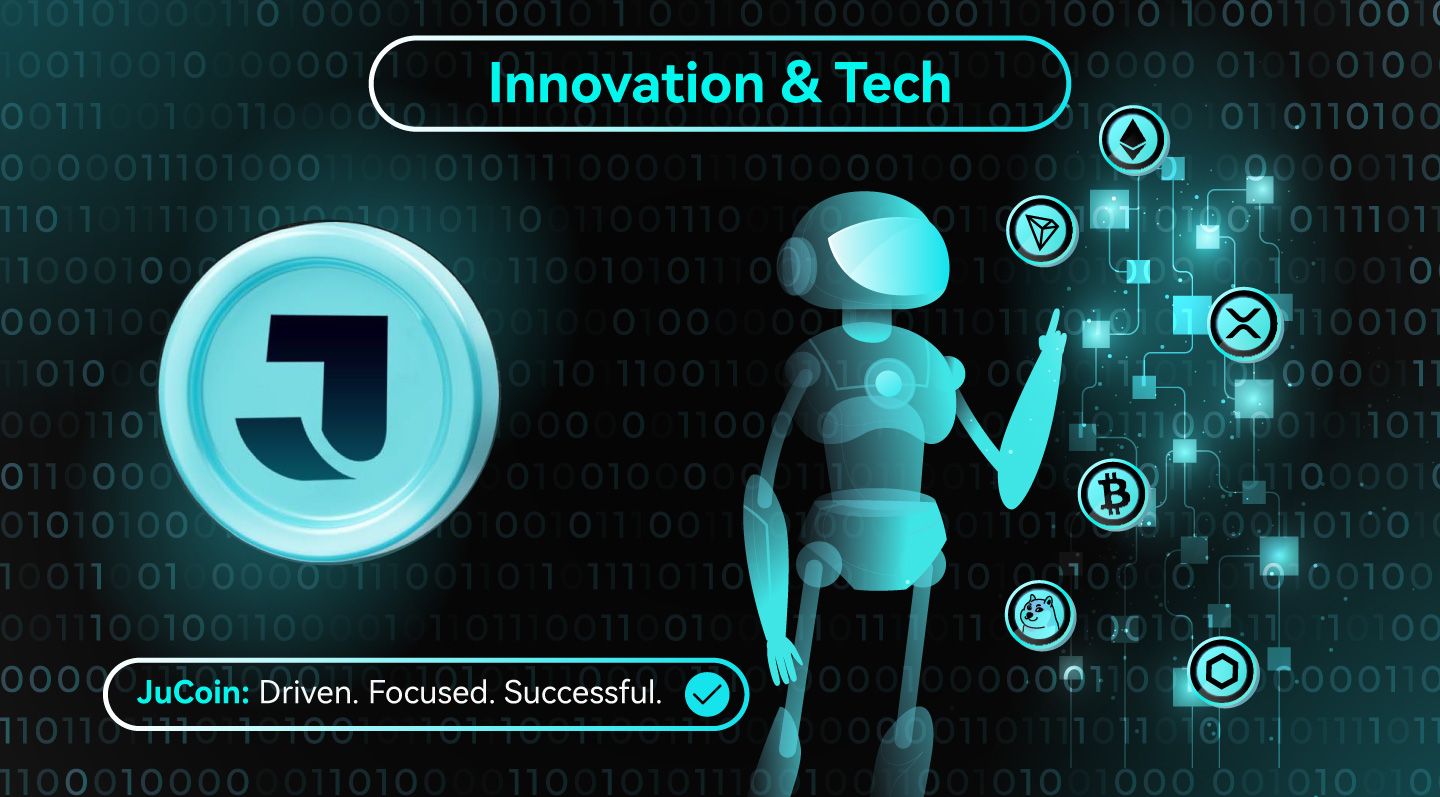
Decentralized finance is experiencing a fundamental transformation in 2025, with the market projected to reach $351.75 billion while introducing revolutionary technologies that bridge traditional finance with blockchain innovation. This Innovation and Tech analysis examines how DeFi has evolved from basic lending protocols into a sophisticated ecosystem featuring artificial intelligence integration, seamless cross-chain operations, and unprecedented institutional adoption that’s reshaping the global financial landscape.
Summary: DeFi’s 2025 evolution features AI-powered automation, cross-chain interoperability solutions, $12B+ real-world asset tokenization, and institutional TradFi integration driving 48.9% CAGR growth across 53.56 million users worldwide.
DeFi Market Transformation: From Experimental to Institutional
The decentralized finance sector has undergone a remarkable transformation, with total value locked surging 232% in layer-2 solutions alone, now exceeding $37 billion. This growth reflects not just increased adoption but fundamental improvements in infrastructure, user experience, and regulatory compliance that have attracted institutional players previously hesitant to engage with on-chain protocols.
Key Market Indicators:
- Total Market Size: $351.75 billion projected by 2031
- Annual Growth Rate: 48.9% CAGR through 2030
- User Base: 53.56 million active participants by 2025
- Revenue Per User: $7.0 average across all platforms
Traditional financial institutions are now viewing DeFi as legitimate infrastructure rather than speculative technology, driven by regulatory clarity and proven security track records from established protocols that have weathered multiple market cycles.

Artificial Intelligence Integration: The DeFAI Revolution
Artificial intelligence has emerged as a transformative force in DeFi, creating what industry experts term “DeFAI” – the convergence of decentralized finance and intelligent automation. AI implementation spans multiple critical functions, from automated market making to predictive risk management.
AI-Powered Protocol Optimization
Modern DeFi protocols leverage AI for:
Automated Market Making:
- Dynamic liquidity provision based on real-time market conditions
- Predictive rebalancing algorithms for optimal capital efficiency
- Machine learning models for price discovery and slippage reduction
Intelligent Risk Assessment:
- Real-time credit scoring using comprehensive on-chain data analysis
- Automated liquidation triggers with ML-based default predictions
- Portfolio optimization algorithms for yield farming strategies
Enhanced Security Measures:
- AI-driven fraud detection monitoring suspicious transaction patterns
- Automated vulnerability scanning for smart contract auditing
- Predictive analytics preventing potential security breaches
The implementation of AI agents has particularly gained traction, with autonomous systems capable of executing complex trading strategies and governance decisions without human intervention. These systems can analyze vast amounts of market data, execute trades across multiple protocols, and optimize yields in real-time.
Cross-Chain Interoperability: Breaking Down Blockchain Barriers
One of the most significant developments in 2025 is the advancement of cross-chain interoperability solutions that eliminate the fragmentation plaguing early DeFi adoption. Users can now seamlessly transfer assets and access protocols across multiple blockchain networks without complex bridging procedures.
Omnichain Infrastructure Benefits
Unified Liquidity Access:
- Aggregated liquidity pools spanning multiple blockchains
- Enhanced price discovery through cross-chain arbitrage
- Reduced slippage for large transactions across networks
Improved User Experience:
- Single-interface access to multi-chain protocols
- Automated optimal routing for transactions
- Elimination of manual wallet switching and bridging
Developer Advantages:
- Ability to build applications leveraging multiple blockchain strengths
- Access to broader user bases across different ecosystems
- Reduced infrastructure complexity for multi-chain deployment
Projects like Stargate, Synapse, and LayerZero have pioneered solutions enabling native cross-chain functionality, allowing developers to create applications that operate seamlessly across Ethereum, Solana, Arbitrum, and other major networks.
Real-World Asset Tokenization: Bridging Traditional and Digital Finance
The real-world asset (RWA) tokenization market has surpassed $12 billion, representing one of the fastest-growing segments in DeFi. This trend enables fractional ownership of traditionally illiquid assets while bringing traditional finance yields to blockchain-native protocols.
RWA Market Categories
Government Securities:
- Tokenized US Treasury bills with over $3 billion TVL
- Government bonds offering stable yields with blockchain efficiency
- Municipal securities enabling broader investor participation
Real Estate Tokenization:
- Fractional property ownership through blockchain representation
- Real estate investment trusts (REITs) with enhanced liquidity
- Commercial property investments accessible to retail investors
Commodity Assets:
- Precious metals tokenization for easier trading and storage
- Agricultural products with transparent supply chain tracking
- Energy assets including renewable energy project investments
The integration of RWAs into DeFi protocols has created new yield opportunities, with tokenized assets serving as collateral for lending, components in liquidity pools, and underlying assets for derivatives trading.
Institutional Adoption Accelerating DeFi Mainstream Integration
Traditional financial institutions are rapidly integrating DeFi solutions, driven by regulatory clarity and proven protocol security. The pro-crypto regulatory environment has removed many barriers previously preventing institutional participation.
TradFi-DeFi Convergence Examples
Banking Integration:
- Major banks offering cryptocurrency custody services
- Bitcoin-backed lending products reaching $100,000 limits
- Integration of stablecoin payments for corporate clients
Asset Management Evolution:
- BlackRock’s BUIDL fund expanding across six blockchain networks
- Traditional asset managers launching tokenized fund products
- Institutional yield farming through professional curation services
Insurance and Risk Management:
- Traditional insurers offering DeFi protocol coverage
- Professional risk assessment services for institutional investors
- Compliance tools enabling regulatory adherence
The “DeFi mullet” strategy has gained prominence, where traditional interfaces abstract away blockchain complexity while leveraging DeFi infrastructure for superior yields and efficiency.
Layer-2 Scaling Solutions: Enhanced Performance and Reduced Costs
Layer-2 scaling solutions have become essential for DeFi growth, with protocols increasingly launching dedicated blockchains to optimize performance and user experience. This trend addresses scalability challenges while providing new revenue streams for protocol developers.
Dedicated Protocol Blockchains
Performance Benefits:
- Elimination of MEV attacks through controlled block space
- Reduced congestion by avoiding competition with other protocols
- Optimized transaction processing for specific use cases
Economic Advantages:
- New revenue streams from transaction fees and block rewards
- Enhanced tokenomics through native blockchain integration
- Greater control over protocol economics and governance
User Experience Improvements:
- Faster transaction confirmation times
- Lower gas fees for protocol interactions
- Seamless integration with existing protocol interfaces
Leading protocols have announced their own layer-2 solutions, including dedicated blockchains optimized for specific DeFi functions like automated market making, lending, and derivatives trading.
Advanced Stablecoin Innovations: Beyond Traditional Collateralization
Stablecoin innovation has expanded beyond traditional fiat-backed models to include algorithmic designs, yield-bearing mechanisms, and exotic backing strategies that offer significantly higher returns than conventional money market instruments.
Next-Generation Stablecoin Categories
Yield-Bearing Stablecoins:
- Funding rate arbitrage strategies generating 8-15% annual yields
- Delta-neutral positions using perpetual swaps for stability
- Automated rebalancing maintaining price stability while earning yield
Algorithm-Backed Designs:
- Overcollateralized protocols with dynamic supply adjustment
- Governance-minimized systems reducing centralization risks
- Multi-asset backing for enhanced stability and yield generation
Exotic Yield Mechanisms:
- OTC arbitrage strategies offering 30%+ returns
- AI-powered yield optimization across multiple protocols
- Cross-chain yield farming with automated asset allocation
These innovations provide alternatives to traditional banking products while maintaining price stability and offering superior yield opportunities for conservative investors.
Decentralized Derivatives: Sophisticated Financial Instruments
The derivatives market within DeFi has matured significantly, offering sophisticated financial instruments that rival traditional finance complexity while maintaining decentralized operation and transparent pricing.
Advanced Derivatives Categories
Perpetual Futures Innovation:
- Exotic asset perpetuals including equities and commodities
- Pre-IPO company exposure through tokenized contracts
- Real estate and infrastructure derivative instruments
Options Market Development:
- Zero-day expiration (0DTE) options for high-frequency trading
- Structured products combining multiple derivative instruments
- Volatility trading through sophisticated option strategies
Synthetic Asset Creation:
- Tokenized exposure to traditional financial markets
- Synthetic commodities and currency pairs
- Index products tracking multiple asset classes
The development of permissionless derivative creation enables anyone to establish markets for virtually any asset, democratizing access to sophisticated financial instruments previously available only to institutional investors.
Gaming and Virtual Economy Integration
The convergence of gaming and DeFi has created new economic models where in-game assets gain real-world value through blockchain integration, enabling players to earn sustainable income through gameplay and virtual asset management.
GameFi Economic Models
Play-to-Earn Mechanics:
- In-game assets tokenized as tradeable NFTs
- Virtual economies with real-world value exchange
- Player-owned economic systems with decentralized governance
DeFi Gaming Integration:
- In-game assets serving as collateral for loans
- Yield farming through gaming protocol participation
- Cross-game asset portability and liquidity
Virtual Real Estate:
- Metaverse land tokenization and trading
- Virtual property rental and development
- Gaming infrastructure investments
This integration has created billion-dollar virtual economies where players can build sustainable income streams through skilled gameplay and strategic asset management.
Sustainable Finance and Environmental Innovation
Environmental considerations have become central to DeFi development, with protocols implementing carbon-neutral operations and creating new markets for environmental assets and sustainability incentives.
Green DeFi Initiatives
Carbon Credit Tokenization:
- Tradeable environmental impact certificates
- Verified carbon offset marketplace integration
- Sustainability scoring for DeFi protocol investments
Energy-Efficient Protocols:
- Proof-of-stake consensus mechanisms reducing energy consumption
- Green mining initiatives for blockchain security
- Renewable energy financing through tokenized projects
ESG Integration:
- Environmental, social, and governance metrics for protocol evaluation
- Sustainable yield farming with environmental impact consideration
- Impact investing through DeFi protocol selection
FAQ: Understanding DeFi’s 2025 Evolution
What makes DeFi different in 2025 compared to previous years? DeFi in 2025 features AI integration, seamless cross-chain functionality, institutional adoption, and sophisticated derivatives that rival traditional finance complexity while maintaining decentralized operation.
How does AI improve DeFi protocols? AI enhances automated market making, risk assessment, fraud detection, yield optimization, and enables autonomous trading agents that can execute complex strategies without human intervention.
What are the benefits of cross-chain interoperability? Cross-chain solutions eliminate blockchain fragmentation, provide access to unified liquidity pools, reduce transaction costs, and enable developers to build applications spanning multiple networks.
Why are institutions adopting DeFi now? Regulatory clarity, proven security track records, superior yields compared to traditional finance, and improved compliance tools have made DeFi attractive to institutional investors.
What are Real-World Assets in DeFi? RWAs represent tokenized traditional assets like treasury bills, real estate, and commodities on blockchain, enabling fractional ownership, improved liquidity, and integration with DeFi protocols.
How do layer-2 solutions improve DeFi? Layer-2 networks provide faster transactions, lower fees, reduced congestion, and enable protocols to optimize performance while maintaining security through mainnet settlement.
What makes modern stablecoins different? New stablecoins use yield-bearing mechanisms, algorithmic backing, and exotic strategies to offer significantly higher returns than traditional money market funds while maintaining price stability.
How does gaming integration benefit DeFi? Gaming brings new users to DeFi through play-to-earn models, creates new asset classes through in-game item tokenization, and enables sustainable income generation through virtual economies.
Key Takeaways
DeFi’s evolution in 2025 represents a fundamental shift from experimental protocols to institutional-grade financial infrastructure capable of competing with traditional finance. The integration of artificial intelligence, cross-chain interoperability, real-world asset tokenization, and sophisticated derivatives has created a mature ecosystem that combines blockchain benefits with traditional finance sophistication. As institutional adoption accelerates and regulatory frameworks solidify, DeFi is positioned to capture significant market share from conventional financial services through superior efficiency, transparency, and yield generation. The convergence of gaming, environmental sustainability, and advanced financial instruments suggests DeFi will continue expanding beyond pure financial applications into broader economic and social systems.





